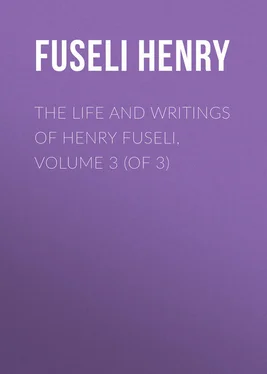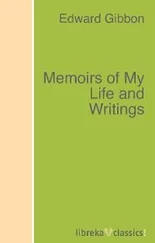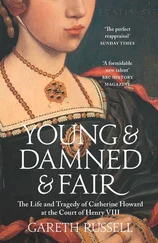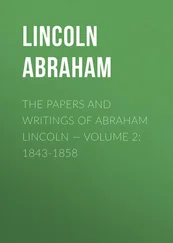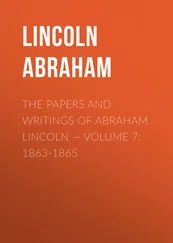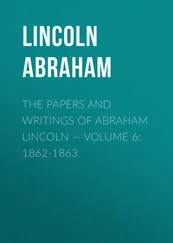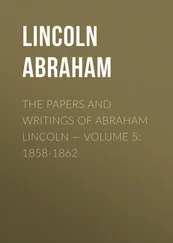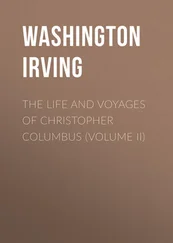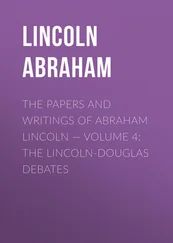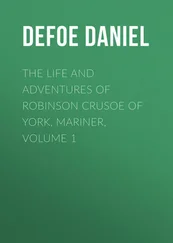Henry Fuseli - The Life and Writings of Henry Fuseli, Volume 3 (of 3)
Здесь есть возможность читать онлайн «Henry Fuseli - The Life and Writings of Henry Fuseli, Volume 3 (of 3)» — ознакомительный отрывок электронной книги совершенно бесплатно, а после прочтения отрывка купить полную версию. В некоторых случаях можно слушать аудио, скачать через торрент в формате fb2 и присутствует краткое содержание. Жанр: visual_arts, foreign_antique, foreign_prose, на английском языке. Описание произведения, (предисловие) а так же отзывы посетителей доступны на портале библиотеки ЛибКат.
- Название:The Life and Writings of Henry Fuseli, Volume 3 (of 3)
- Автор:
- Жанр:
- Год:неизвестен
- ISBN:нет данных
- Рейтинг книги:5 / 5. Голосов: 1
-
Избранное:Добавить в избранное
- Отзывы:
-
Ваша оценка:
- 100
- 1
- 2
- 3
- 4
- 5
The Life and Writings of Henry Fuseli, Volume 3 (of 3): краткое содержание, описание и аннотация
Предлагаем к чтению аннотацию, описание, краткое содержание или предисловие (зависит от того, что написал сам автор книги «The Life and Writings of Henry Fuseli, Volume 3 (of 3)»). Если вы не нашли необходимую информацию о книге — напишите в комментариях, мы постараемся отыскать её.
The Life and Writings of Henry Fuseli, Volume 3 (of 3) — читать онлайн ознакомительный отрывок
Ниже представлен текст книги, разбитый по страницам. Система сохранения места последней прочитанной страницы, позволяет с удобством читать онлайн бесплатно книгу «The Life and Writings of Henry Fuseli, Volume 3 (of 3)», без необходимости каждый раз заново искать на чём Вы остановились. Поставьте закладку, и сможете в любой момент перейти на страницу, на которой закончили чтение.
Интервал:
Закладка:
The figure of Polypheme groping at the mouth of his cave for Ulysses, and the composition of Æolus granting to Ulysses favourable winds, are striking instances of both. Than the Cyclops, M. Agnolo himself never conceived a form of savage energy, provoked by sufferings and revenge, with attitude and limbs more in unison; whilst the God of Winds is degraded to the scanty and ludicrous semblance of Thersites, and Ulysses with his companions travestied by the semi-barbarous look and costume of the age of Constantine or Attila.
From Pellegrino Tibaldi, the Germans, Dutch, and Flemings, Hemskerk, Goltzius, and Spranger, borrowed the compendium of the great Tuscan's peculiarities, dropsied the forms of vigour, or dressed the gewgaws of children in colossal shapes.
Parmegiano poised his line between the grace of Correggio and the energy of M. Agnolo, and from contrast produced Elegance; but instead of making propriety her measure, degraded her to affectation. That disengaged play of delicate forms, the "sueltezza" of the Italians, is the prerogative of Parmegiano, though nearly always obtained at the expense of proportion. He conceived the variety, but not the simplicity of beauty, and drove contrast to extravagance. The figure of St. John, in the altar-piece of St. Salvador at Città di Castello, now at the Marquis of Abercorn's, and known from the print of Giulio Bonasone, which less imitates than exaggerates its original in the Cartoon of Pisa, is one proof among many: his action is the accident of his attitude; he is conscious of his grandeur, and loses the fervour of the apostle in the orator.
So his celebrated Moses, if I see right, has in his forms less of grandeur than agility, in his action more passion than majesty, and loses the legislator in the savage. This figure, together with Raphael's figure of God in the Vision of Ezekiel, is said to have furnished Gray with some of the master-traits of his Bard, – figures than which Painting cannot produce two more dissimilar: calm, placid contemplation, and the decided burst of passion in coalition.
Whilst M. Agnolo was doomed to live and brood over the perversion of his style, death prevented Raffaello from witnessing the gradual decay of his.
Such was the state of style, when, toward the decline of the sixteenth century, Lodovico Carracci, with his cousins Agostino and Annibale, founded at Bologna, on the hints caught from Pellegrino Tibaldi, that Eclectic School which, by selecting the beauties, correcting the faults, supplying the defects, and avoiding the extremes of the different styles, attempted to form a perfect system. The specious ingredients of this technic panacea have been preserved in a complimentary sonnet of Agostino Carracci, and are compounded of the design and symmetry of Raffaello, the terrible manner of M. Agnolo, the sovereign purity of Correggio's style, Tiziano's truth and nature, Tintoretto's and Paolo's vivacity and chiaroscuro, Lombardy's tone of colour, the learned invention of Primaticcio, the decorum and solidity of Pellegrino Tibaldi, and a little of Parmegiano's grace, all amalgamated by Niccolo dell' Abbate.
I shall not attempt a parody of this prescription by transferring it to Poetry, and prescribing to the candidate for dramatic fame the imitation of Shakspeare, Otway, Jonson, Milton, Dryden, Congreve, Racine, Addison, as amalgamated by Nicholas Rowe. Let me only ask whether such a mixture of demands ever entered with equal evidence the mind of any one artist, ancient or modern; whether, if it be granted possible that they did, they were ever balanced with equal impartiality; and grant this, whether they ever were or could be executed with equal felicity? A character of equal universal power is not a human character; and the nearest approach to perfection can only be in carrying to excellence one great quality with the least alloy of collateral defects: to attempt more will probably end in the extinction of character, and that, in mediocrity – the cypher of Art.
And were the Carracci such? Separate the precept from the practice, the artist from the teacher, and the Carracci are in possession of my submissive homage. Lodovico is the inventor of that solemn hue, that sober twilight, which you have heard so often recommended as the proper tone of historic colour. Agostino, with learning, taste, and form, combined Corregiesque tints. Annibale, inferior to both in sensibility and taste, in the wide range of talent, undaunted execution and academic prowess, left either far behind. But if he preserved the breadth of the style we speak of, he added nothing to its dignity; his pupils were inferior to him , and to his pupils, their successors. Style continued to linger, with fatal symptoms of decay, in Italy; and if it survives, has not yet found a place to re-establish its powers on this side of the Alps.
TWELFTH LECTURE.
ON THE PRESENT STATE OF THE ART, AND THE CAUSES WHICH CHECK ITS PROGRESS
Such is the influence of the plastic Arts on society, on manners, sentiments, the commodities and the ornaments of life, that we think ourselves generally entitled to form our estimate of times and nations by its standard. As our homage attends those whose patronage reared them to a state of efflorescence or maturity, so we pass with neglect, or pursue with contempt, the age or race which want of culture or of opportunity averted from developing symptoms of a similar attachment.
A genuine perception of Beauty is the highest degree of education, the ultimate polish of man; the master-key of the mind, it makes us better than we were before. Elevated or charmed by the contemplation of superior works of Art, our mind passes from the images themselves to their authors, and from them to the race which reared the powers that furnish us with models of imitation or multiply our pleasures.
This inward sense is supported by exterior motives in contact with a far greater part of society, whom wants and commerce connect with the Arts; for nations pay or receive tribute in proportion as their technic sense exerts itself or slumbers. Whatever is commodious, amene, or useful, depends in a great measure on the Arts: dress, furniture, and habitation owe to their breath what they can boast of grace, propriety, or shape: they teach Elegance to finish what Necessity invented, and make us enamoured of our wants.
This benign influence infallibly spreads or diminishes in proportion as its original source, a sense of genuine Beauty, flows from an ample or a scanty vein, in a clear or turbid stream. As Taste is adulterated or sinks, Ornament takes a meagre, clumsy, barbarous, ludicrous, or meretricious form; Affectation dictates; Simplicity and elegance are loaded; interest vanishes: in a short time Necessity alone remains, and Novelty with Error go hand in hand.
These obvious observations on the importance of the Arts, lead to the question so often discussed, and at no time more important than ours – on the causes that raised them at various times, and among different nations – on the means of assisting their progress, and how to check their decay. Of much that has been said on it, much must be repeated, and something added.
The Greeks commonly lead the van of the arguments produced to answer this question. Their religious and civil establishments; their manners, games, contests of valour and of talents; the Cyclus of their Mythology, peopled with celestial and heroic forms; the honours, the celebrity of artists; the serene Grecian sky and mildness of the climate, are the causes supposed to have carried that nation within the ken of perfection.
Without refusing to each of these various advantages its share of effect, History informs us that if Religion and Liberty prepared a public, and spread a technic taste over all Greece, Athens and Corinth must be considered as the principal nurses of Art, without whose fostering care the general causes mentioned could not have had so decided an effect; for nothing surely contributed so much to the gradual evolution of Art, as that perpetual opportunity which they presented to the artist of public exhibition; the decoration of temples, halls, porticoes, a succession of employments equally numerous, important, and dignified: hence that emulation to gain the heights of Art; the fervour of public encouragement, the zeal and gratitude of the artists were reciprocal: Polygnotus prepared with Cimon what Phidias with Pericles established, on public taste, Essential, Characteristic, and Ideal Styles.
Читать дальшеИнтервал:
Закладка:
Похожие книги на «The Life and Writings of Henry Fuseli, Volume 3 (of 3)»
Представляем Вашему вниманию похожие книги на «The Life and Writings of Henry Fuseli, Volume 3 (of 3)» списком для выбора. Мы отобрали схожую по названию и смыслу литературу в надежде предоставить читателям больше вариантов отыскать новые, интересные, ещё непрочитанные произведения.
Обсуждение, отзывы о книге «The Life and Writings of Henry Fuseli, Volume 3 (of 3)» и просто собственные мнения читателей. Оставьте ваши комментарии, напишите, что Вы думаете о произведении, его смысле или главных героях. Укажите что конкретно понравилось, а что нет, и почему Вы так считаете.
